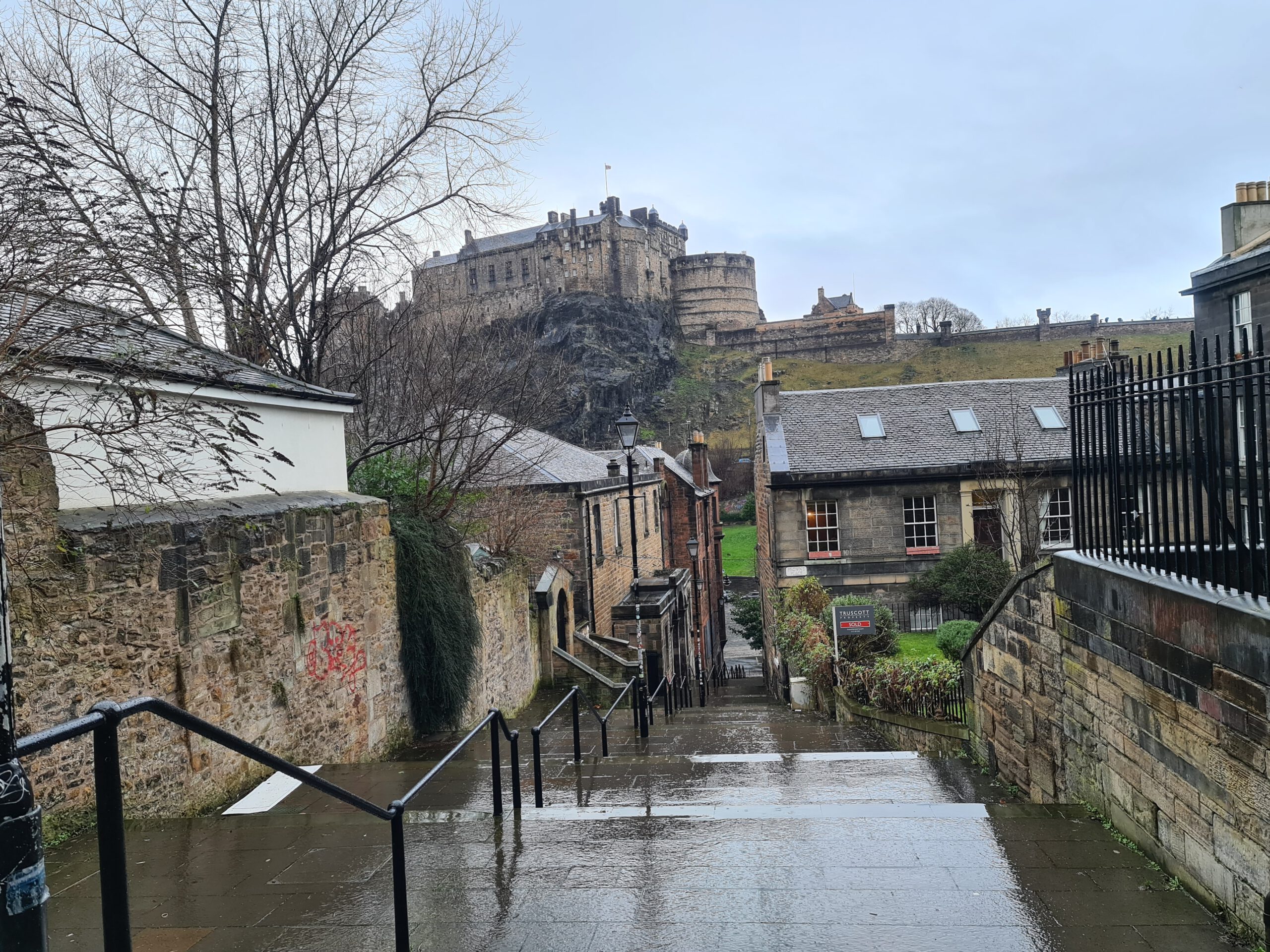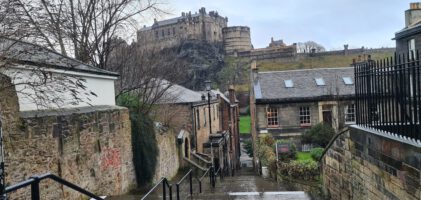Location: top of Castlehill, Edinburgh, Scotland
kind of castle: royal palace, fortress
today: mostly open to public
public transport: buses and trains to Edinburgh, castle on top of the royal mile to be reached on foot
scheduled monument: yes
managed by: Historic Environment Scotland and British Army
entrance fee: £ 18.- per adult (Tickets | Edinburgh Castle)
opening times: Opening Times | Edinburgh Castle
directions: Google Maps
A royal fortress, a royal palace, a museum however you want to refer to it. Edinburgh Castle is definitely a must visit when visiting any place in Scotland you will have to check out the Castle as well as so many more things in Scotland’s capital.
Located on Castle Rock, the spot on which the castle sits today has been occupied by humans since the last Iron Age, at least. A castle has stood on top of the rock ever since the reign of David I in the 12th century and ever since it has been one of the most important strongholds of the Scottish Kingdom, being involved in many historical conflicts.
The royal residence on top of Castle rock existed only until 1633, the building stayed but the kings and queens ever since stayed in London instead of Scotland. It started before then but by the 17th century the main of the complex was as military barracks with a large garrison.
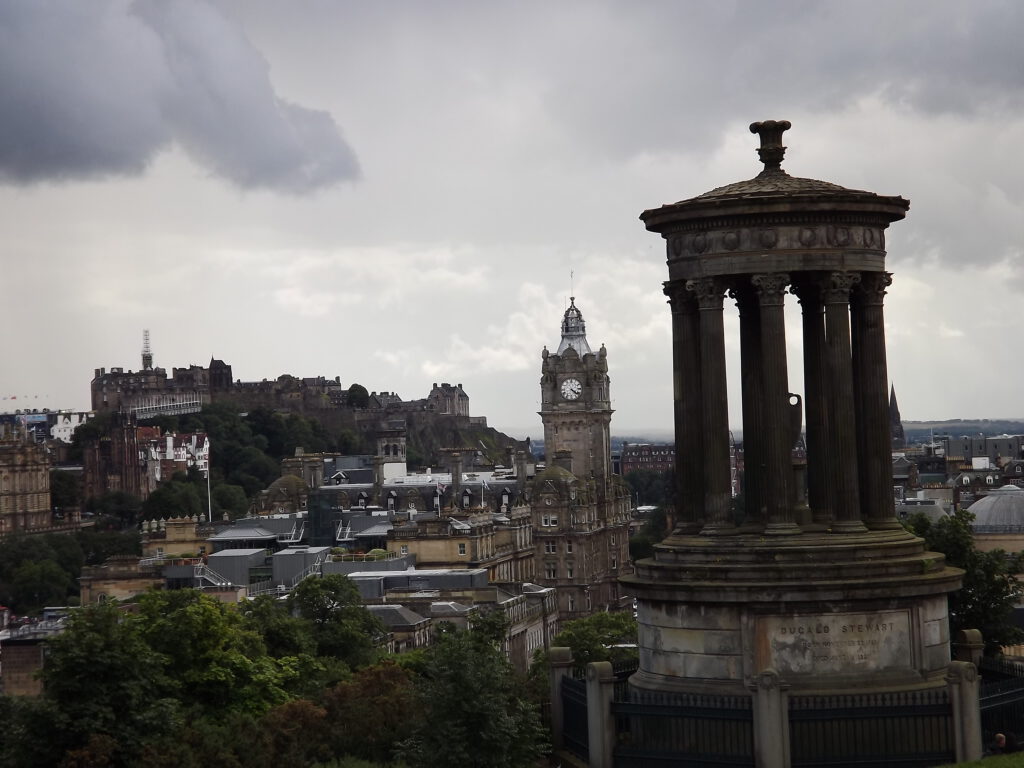
With the great advantage point of the volcanic Castle Rock which’s summit is about 130 metres above sea level the castle had only one readily accessible route up to its position however, basalt is extremely impermeable which made water supply though of the 28 metre deep well extremely difficult and while in a siege or a drought.
Though there is no clear evidence giving clues about when Castle Rock was first inhabited it is thought to be very early. With archaeological excavations uncovering evidence suggesting it has been settled during the late Bronze Age or early Iron Age. Leaving us to imagine fierce Iron Age warriors defending a wooden hill fort there. The Romans for one did not record an interest in the location and there are no written records of the specific place in that time either. However, the early chronicler Geoffrey of Monmouth wrote that Ebraucus had fifty children by his twenty wives, he also was the founder of York, Dumbarton and the ‘Maidens Castle’ which in ancient times was used as a name for Edinburgh Castle, in charters of David I and his successors the name “Maidens’ Castle” appeared as well so we can safely say around 1100 the castle should have been existing or at least soon after.
There are different versions as of why it was called Maidens Castle one of them being that the ‘maidens’ were a group of nuns who lived in the castle but later on were replaced by canons, since canons fitted better to soldiers than nuns did.

During the early Middle Ages there were few traces of settlements on Castle Rock however even those can’t be taken seriously since they are everything but chronologically or supported by evidence. The midden deposits show no clear break since Roman times so it is considered that there must have been something all the time through.
It was in the high Middle Ages when the first documentary reference of the Castle of Maidens was made in clear relation to a castle at Edinburgh. John of Fordun’s mentioned where the later Saint Margaret was brought the news of the death of her husband, King Malcolm III in 1093. Fordun however didn’t write this chronicle until the late 14th century and the chronicle by Bishop Turgot makes no mention of the castle. So, what to believe? Well, we might never know for sure, but some mystery always makes things more interesting, doesn’t it.
What we do know is that the reigns of Malcolm III and his sons made Edinburgh Castle one of the most significant royal centres in Scotland with Malcolm’s son King Edgar dying there in 1107. King David I developed a back then probably still made out of timber seat of royal power in which he held an assembly of nobles and churchmen.

Back in that time there are two stone buildings documented of which St. Margaret’s Chapel remains, often thought to be the remnant of a square, stone keep which had formed the bulk of the 12th-century fortification on the top of Castle Hill, looking similar to the keep of Carlisle Castle. David’s son King Malcolm IV was one of the biggest fans of Edinburgh, he reportedly stayed there more than at any other location.
After William “The Lion” king of Scotland was captured by the English at the Battle of Alnwick, in the course of the Treaty of Falaise, he had to surrender Edinburgh Castle, alongside Berwick, Roxburgh and Stirling Castle to secure his release. Henry II, king of England at that time played William well gaining some of the most important advantage points of 12th century Scotland within one treaty.
It took the royal marriage of William and his English bride, Ermengarde de Beaumont to retreat Edinburgh Castle in 1186, in form of the dowry of his bride, after being held for 12 years by the English, Edinburgh Castle was finally back in Scottish hands, however, it wouldn’t be the last time the English army would get a hold of the castle, with it being established as the main repository of Scotland’s official state papers by the end of the 12th century.
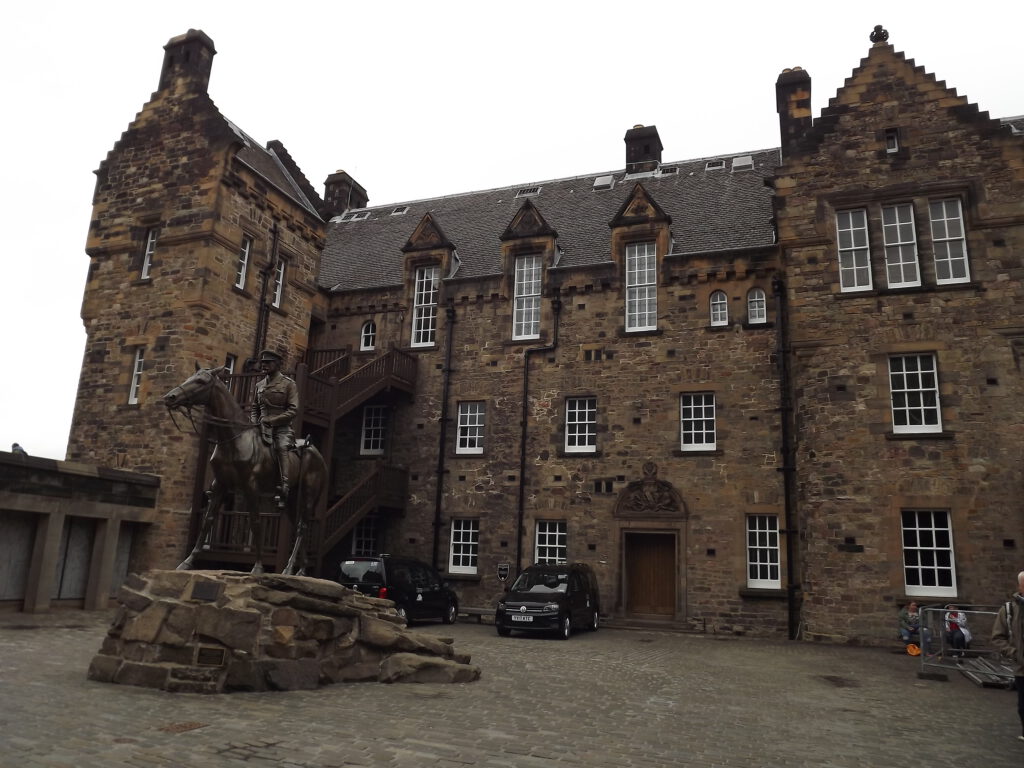
The Wars of Scottish Independence started with the death of King Alexander III, who left the Scottish throne without an heir. It is no wonder that Edinburgh Castle played a central role in this feud as well, with Edward I of England staying there during negotiations. And in 1296 getting the castle under English control following a three-day siege, taking away many Scottish legal records and royal treasures.
The 14th of March 1314 was the day the Scots finally got back Edinburgh Castle by a surprise night attack, led by Thomas Randolph, 1st Earl of Moray. The men famously climbed up the north face of Castle Rock following that they surprised the garrison and took over control of the castle. On orders of Robert the Bruce the castle was afterwards slighted to prevent any further re-occupation by the English, all this happened just four months before the famous victory at the Battle of Bannockburn.
It was the English who in 1335, after invading Scotland in the Second War of Scottish Independence, reoccupied and refortified Edinburgh Castle, holding it until 1341 when William Douglas, Lord of Liddesdale retook the castle and killed the English garrison.
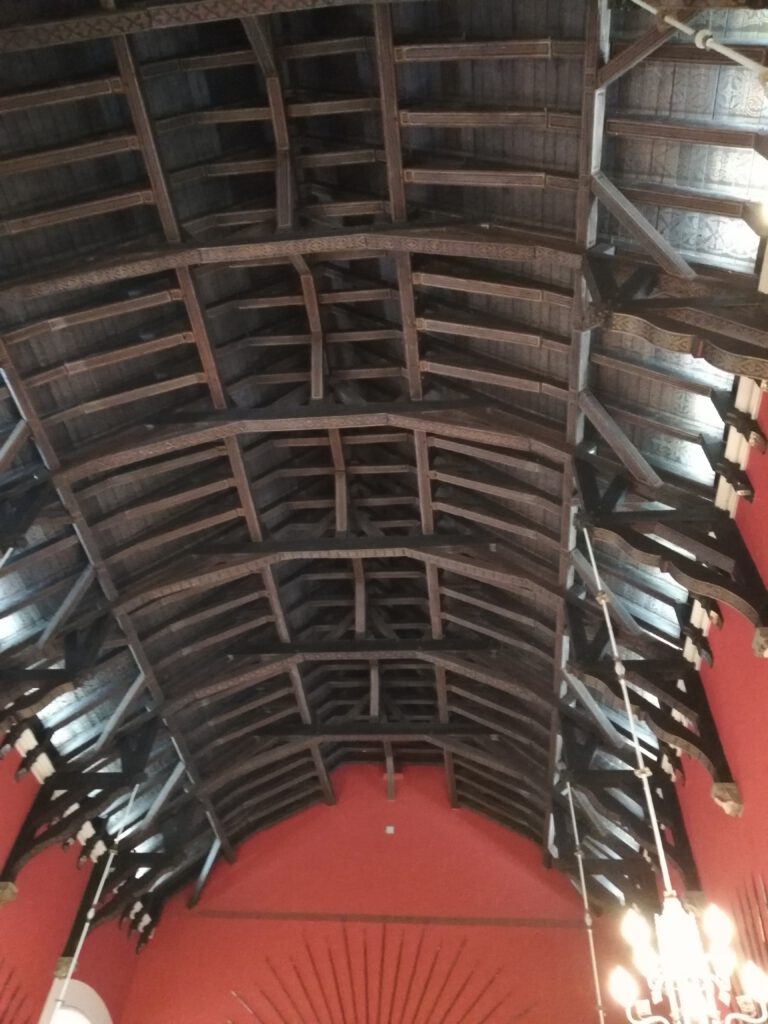
After the Treaty of Berwick from 1357, David II resumed his rule and rebuilt Edinburgh Castle, making it his principal seat of government. Around this time the construction of David’s Tower was started where now the Half Moon Battery is located.
The 15th century saw a siege by the English as well as the famous “Black Dinner” happening in and around Edinburgh Castle. When Chancellor William Crichton wanted to take over the regency of Scotland, summoning sixteen-year-old William Douglas, 6th Earl of Douglas and his younger brother to the castle in November 1440. It was in David’s Tower that the Black Dinner was held and following it the two young boys were famously executed, right in front of ten-year-old King James II.
With Douglas’ supporters subsequently besieging the castle, they did their part to make Edinburgh Castle the most besieged Castle in the world!
By 1458 a Great Hall was in existence and six years later the access to the castle was improved. Before that the great bombard “Mons Meg” arrived in the castle in 1457 which was the start of gun manufacturing connected to Edinburgh. Around the same time the royal family stayed at the Abbey of Holyrood more frequently, with James IV starting to build Holyroodhouse right next to the abbey as his principal residence in Edinburgh. While also creating the Great Hall at Edinburgh Castle.

The castle as well as its defences evolved over hundreds of years, not stopping with the death of any king or queen. They all added their personal note in form of new buildings. The Half Moon Battery for instants was built after the Lang Siege of 1573 and was armed with bronze guns referred to as the Seven Sisters. Along the Half Moon Battery the huge garrison of the castle and a secure jail for prisoners of war were added as well.
Seven years before that Mary Queen of Scots gave birth to her son the future James VI and I in the Royal Palace above which door you can still find the gilded initials of Mary and her husband Henry Stewart, Lord Darnley – MAH (which funnily enough is also the airport code for Menorca 😊 insights of a travel agent).
From 1603 on the castle was barely visited by the royals since the “Union of the Crowns” required James VI to stay further down in England for a while until it was his decision to mainly stay down there. 1639 was the year in which the Covenanter forces captured the castle within just 30 minutes, led by General Alexander Leslie. The missing royals in the castle just supported it turning into a significant military base more and more in the 1650s, rebuilding and enhancing defences as a response to the Jacobite Risings between 1689 and 1746, were also made. Some of those enhancements were the building of the Dury’s Battery as well as construction of the Queen Anne Building, which contains barracks.
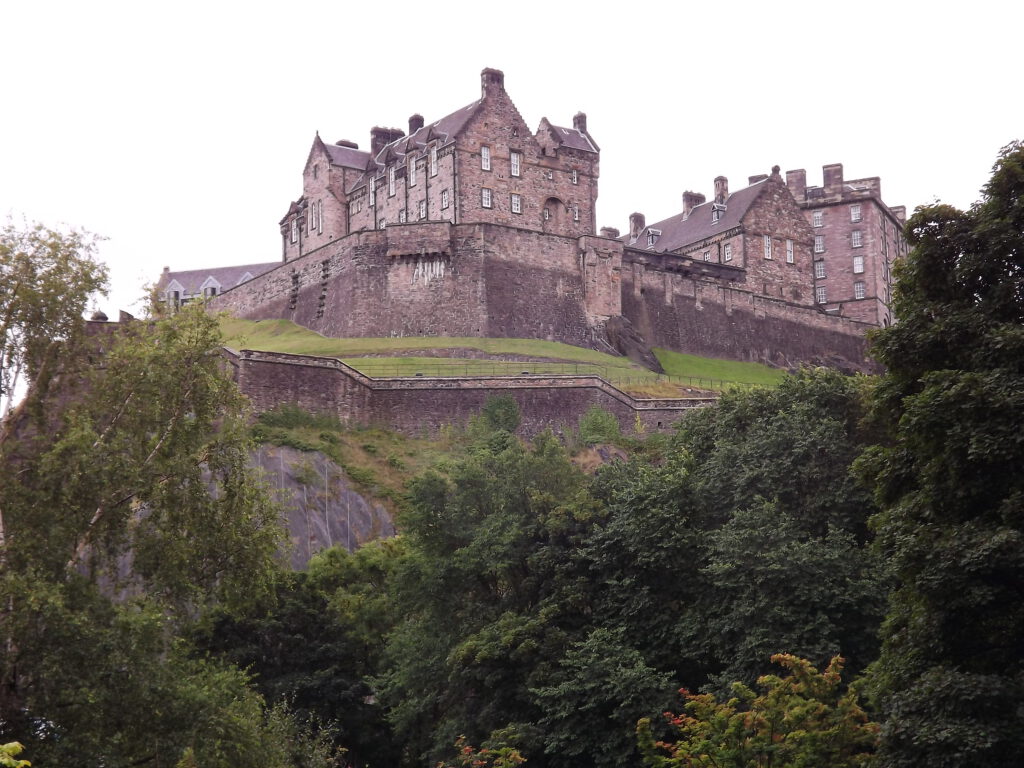
In 1715 the Jacobite forces failed to capture the castle due to a too short ladder. During all this time about 600 troops were housed in the new barracks, which are still used by the military today. Given the fact that the mascots of many regiments back then were there dogs, there is no wonder that there is a dog cemetery as well in which those brave companions often were laid to rest. In addition to that the troops of course also needed horses in times of war and so its no surprise to find stables to be found as well.
Another capture of Edinburgh Castle by Jacobites failed during the last rising of 1745-46. Bonnie Prince Charlie might have captured the city of Edinburgh but on capturing the Castle he failed.
The use of the castle as a military garrison also involved hosting prisoners of war, the first of which were French privateers caught in 1758 shortly after the beginning of the Seven Year War. Between then and 1814 there were many hundreds of war prisoners incarcerated in the prisons in the vaults below Crown Square. They might have been grim about the fact that they were locked up in the most secure lock-up in Scotland and maybe they were just grim because of the draughts about which even royals complained, even thought their stay will have definitely been more comfortable than the prisoners stay.

Given that it still is used as a military base today there is no wonder that Edinburgh Castle was also used during the Second World War although the part, I am telling you about might not be the first you think of. The Crown of Scotland for example was hidden in David’s Tower, in maybe the least expected place, the medieval latrine closet, well protected of course!
It was not just the crown or as today the crown jewels which were kept there, the nation’s records and riches were kept in the castle as well as jewels and treasures from all over the world. Relics of Robert the Bruce, fine tapestries and magic amulets were some of those treasures.
These days the Castle houses alongside the Crown Jewels, the stone of destiny, all of which are located in the houses of Honours, the Scottish National War Memorial, 15th century gun Mons Meg and the One o’ Clock Gun. The Honours of Scotland are the oldest Crown Jewels in Britain and were all together first used in 1543 when Mary Queen of Scots came to the throne.

Edinburgh Castle is part of the Old and New Towns of Edinburgh UNESCO World Heritage Site as well as Scotland’s leading tourist attraction while still remains an active military base offering an annual highlight in Edinburgh, the Royal Edinburgh Military Tattoo which is held on its Esplanade every August.
Given its load of history and the number of things you can find within the Castle walls it is no wonder that it was voted Best UK Heritage Attraction at least four years in a row at the British Travel Awards. St Margaret’s Chapel being the oldest building in Edinburgh, alongside the already mentioned ones, the castle still is an active military base today and has three military museums, the Scottish National War Memorial and the Prisons of War exhibition.
